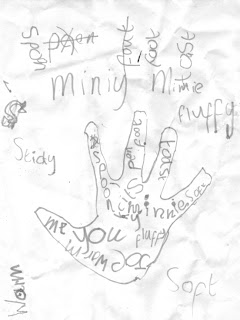You might find these tips useful... Ask open-ended questions to get boys' imaginations involved. 'What if..? and 'How would you?' will help them picture things from different perspectives.
Build on their own interests and experiences.
Some of the exercises on the blog will suit one person and not another - don't get put of if an idea isn't an immediate hit.
Talk through the exercise before picking up pens/pencil/paint/scissors. Discuss ideas and options, so that there's a clear plan.
Promote and reward imagination and originality. We mean sweets!
Create 'a safe place to play'. This is a standard arthur+martha rule. Ensure that everyone feels safe to say unusual things, take risks and respond creatively. Criticism and bullying are out.
Encourage them to shape the way they are working. If you want to encourage boys to be adventurous and explore ideas freely, then you must allow them freedoms.
As well as the burning need for making a rumpus, there will also be a need for quiet times. Reflection and concentration are vital if you want to encourage deep involvement.
Make the most of unexpected events. When appropriate, put aside your plans and busk it. Treat accidents as 'incidents' to be included in making the work. Paint spills, computer errors, misheard instructions, unexpected visitors, firecrackers all have their place.
Be willing to stand back and let the child take the lead. However, always be on hand to provide support.
Join in with activities. Showing that you are a learner too helps to create an open, constructive environment.
Give boys the chance to work with friends and family of different age groups.
Encourage boys to reflect on what they've done, share ideas with others and talk about their progress.
(These tips are adapted from the National Curriculum, 'Creativity'.)






















